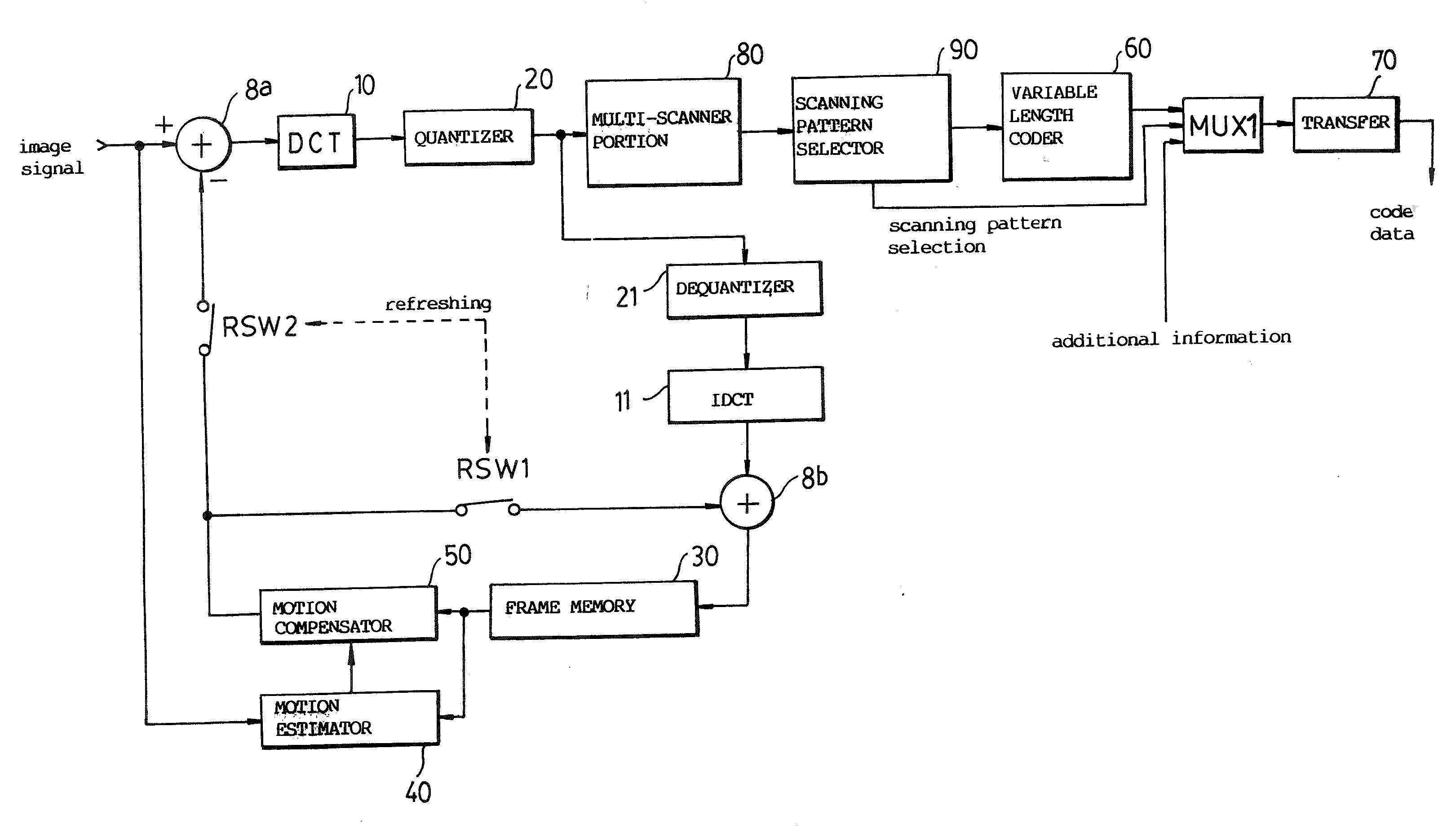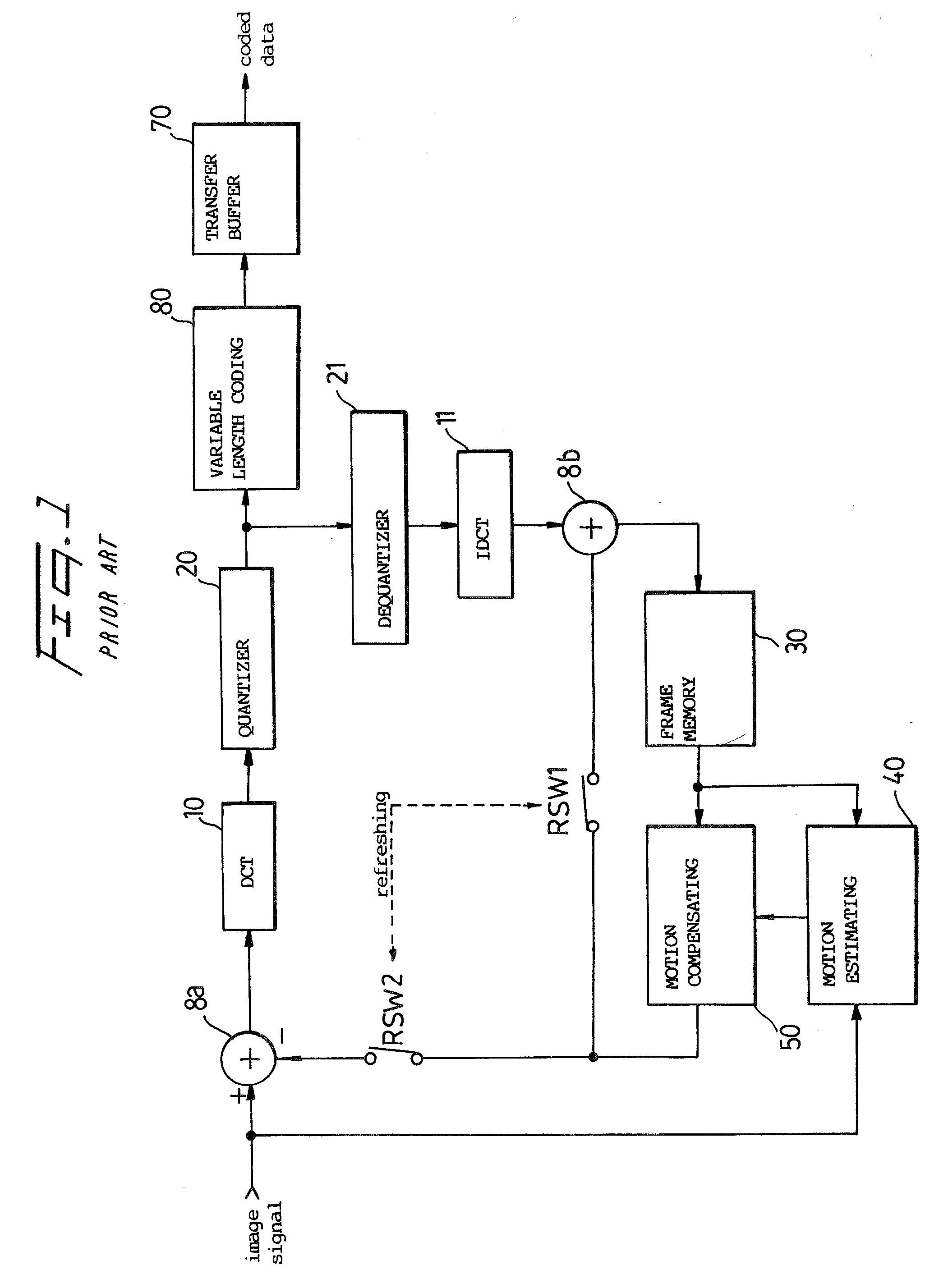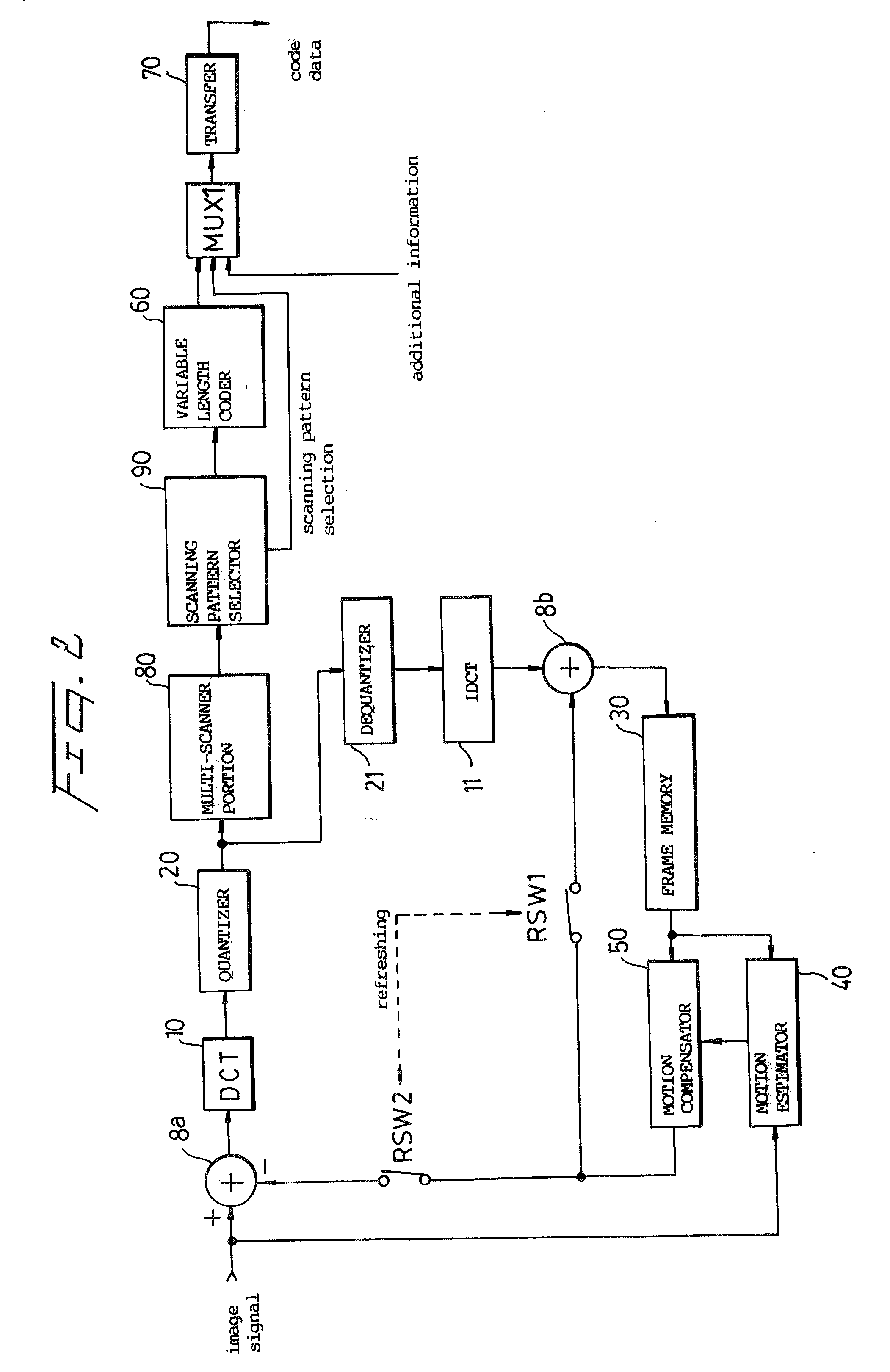Signal compressing signal
a signal and compression technology, applied in the field of signal compression system, can solve the problems of inconvenient mode determining procedure, inability to take into account the spectrum differences of motion-compensated interframe dct signals, and inability to apply the scanning regime of the aforementioned method
- Summary
- Abstract
- Description
- Claims
- Application Information
AI Technical Summary
Benefits of technology
Problems solved by technology
Method used
Image
Examples
Embodiment Construction
[0022] Referring to FIG. 2, an input signal is divided into equal-sized sub-blocks, for example, 8×8, 16×16, . . . . A motion estimator 40 determines a motion vector by comparing the current frame and a one frame delayed signal from a frame memory 30.
[0023] The motion vector is supplied to a motion compensator 60 which, in turn, compensates the delayed frame signal for movement. A first adder 8a produces a difference signal representing the difference between the present frame and the delayed, motion-compensated frame. A DCT coder 10 DCT-codes the difference signal. The DCT coded image signal is quantized by a quantizer 20 and then dequantized by a dequantizer 21. The dequantized signal is supplied to a second adder 8b, via IDCT 11, which adds it to the output of the motion compensator 11. This produces a signal corresponding to the original image signal.
[0024] The output of the motion compensator 50 is applied to the adders 8a, 8b by refresh switches RSW2 and RSW1, respectively. ...
PUM
 Login to View More
Login to View More Abstract
Description
Claims
Application Information
 Login to View More
Login to View More - R&D
- Intellectual Property
- Life Sciences
- Materials
- Tech Scout
- Unparalleled Data Quality
- Higher Quality Content
- 60% Fewer Hallucinations
Browse by: Latest US Patents, China's latest patents, Technical Efficacy Thesaurus, Application Domain, Technology Topic, Popular Technical Reports.
© 2025 PatSnap. All rights reserved.Legal|Privacy policy|Modern Slavery Act Transparency Statement|Sitemap|About US| Contact US: help@patsnap.com



